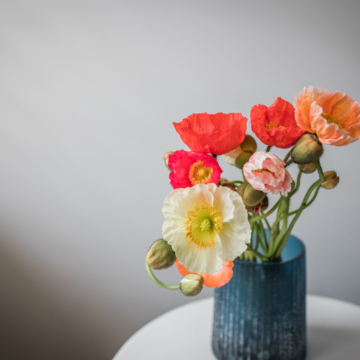Welcome to our blog, where we will embark on a fragrant journey exploring the captivating beauty of freesia. Bursting with vibrant colours and a fragrance that is unforgettable, freesias are a beautiful addition to any floral arrangement. Originating from the southern regions of Africa, these flowers have a rich history, cultural significance and a wide range of varieties.

Freesias, scientifically known as Freesia spp., are native to South Africa and were discovered in the 18th century by a botanist named Christian P. Ecklon. The plant was named after Friedrich Heinrich Theodor Freese, a German physician and botanist. Originally, freesias were limited to a few wild species, but through cultivation, numerous varieties have been developed.
Today, there are around 20 different species of freesias, each with its unique colour palette and characteristic fragrance. From the classic whites, yellows and pinks to the bolder shades of reds, purples and oranges, freesias offer a spectrum of options.

Freesias have deep cultural significance in various parts of the world. In Victorian times, these flowers were commonly associated with trust and innocence. They were often given as tokens of friendship and were highly admired for their delicate beauty. Even today, freesias are a popular choice for expressing feelings of purity, friendship and thoughtfulness.
Symbolically, freesias are also known to represent trust, faithfulness and the spirit of adventure. They can be given as a gesture of appreciation or used to convey the message of a new beginning.
During the 19th century in England, freesia flowers held significant meaning as a secret messenger. This period witnessed the height of floriography, a prevailing trend of conveying coded messages through flowers. In a society where emotions were frequently suppressed, flowers provided a subtle means for individuals to express their genuine feelings without relying on spoken or written language.

The freesia, in particular, became a symbol denoting the transmission of a secret message. When one received a bouquet of freesias, it signified an extraordinary level of trust, as the sender entrusted their confidential thoughts or feelings to the recipient through this delicate floral gesture. https://www.bloomandwild.com/freesia-flower-meaning
Annually, during spring, a multitude of people eagerly head to Hachijojima Island, situated approximately 150 miles south of Tokyo, to witness the captivating spectacle of freesias in full bloom. Nestled at the foot of Hachijo-Fuji, a dormant volcano, over 350,000 freesia blossoms burst forth from March 20 to April 5. The atmosphere becomes saturated with the delightful and invigorating citrus fragrance of freesias, while the fields erupt into a riot of vibrant colours. This event, known as the freesia festival, not only offers an opportunity to revel in the beauty of nature but also encompasses lively musical performances, craft markets and the joy of flower picking, all in celebration of the arrival of spring. https://www.japan.travel/en/sports/diving/travel/hachijojima-freesia-festival/

In some folklore and superstitions, freesias are believed to possess protective qualities. It was thought that wearing freesias or placing them in the home would bring good luck and ward off evil spirits. Additionally, the fragrance of freesias was believed to have a calming effect on the mind and body, helping to alleviate stress and anxiety.
Their fragrance has a mood-lifting effect, promoting relaxation, reducing stress and increasing overall well-being. Surrounding yourself with freesias can create a soothing environment that uplifts the spirits and brings a sense of tranquility.
Freesias are highly valued in the cut flower industry for their vibrant colours, long stems and fresh fragrance. To meet the demand for these blooms, they are cultivated in various regions around the world, including the Netherlands, Kenya and Colombia.
To ensure the highest quality, freesias are carefully grown and harvested. They require well-drained soil, ample sunlight and moderate watering.
Freesias have a relatively long vase life, typically lasting between seven to ten days when properly cared for. Here are some tips to help extend the lifespan of your freesia arrangement:
- Choose a clean vase and fill it with fresh water.
- Trim the stems at a diagonal angle to facilitate water absorption.
- Remove any leaves and buds that may be submerged in water to prevent bacterial growth.
- Place the vase in a cool location away from direct sunlight and heat sources.
- Change the water every two days and recut the stems for improved hydration.
While most freesias are readily available, there are a few rare and sought-after varieties that collectors and enthusiasts adore. For example, the Double White Freesia is a unique variety with multiple layers of petals, creating an exquisite, lush appearance. https://www.tesselaar.net.au/product/549-fantasia-freesias-double-white
Fun fact: Freesias are not only admired for their stunning flowers but also for their impressive ability to produce a sweet, citrus-like fragrance. The scent of freesias has even been used in perfumery to create fragrances loved by many. In numerology, freesia is representative of the number nine, embodying qualities of obligation and selflessness.
Freesias are a true delight for the senses. From their captivating history and cultural significance to their wide range of varieties, these flowers have captivated hearts around the world. Whether you’re looking to brighten your home or send a meaningful gift, freesias are sure to bring joy and beauty to any occasion.






